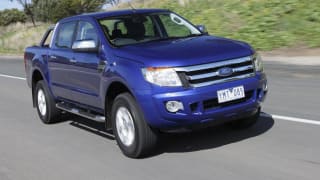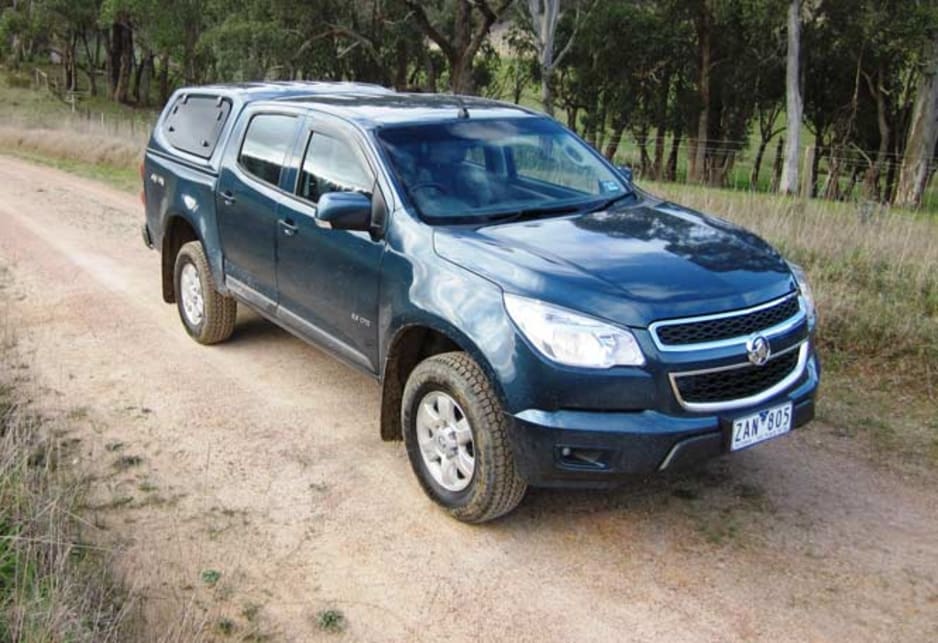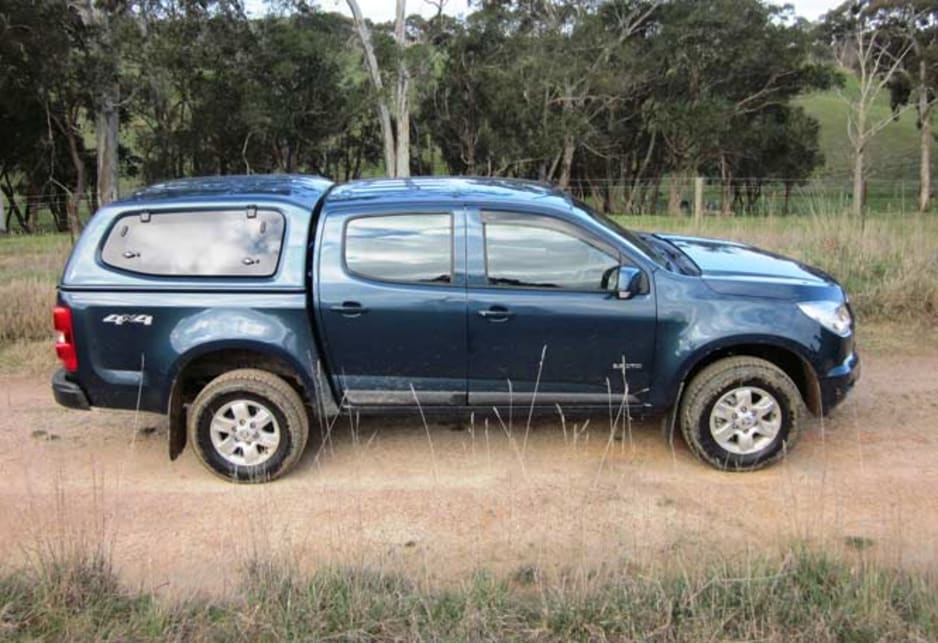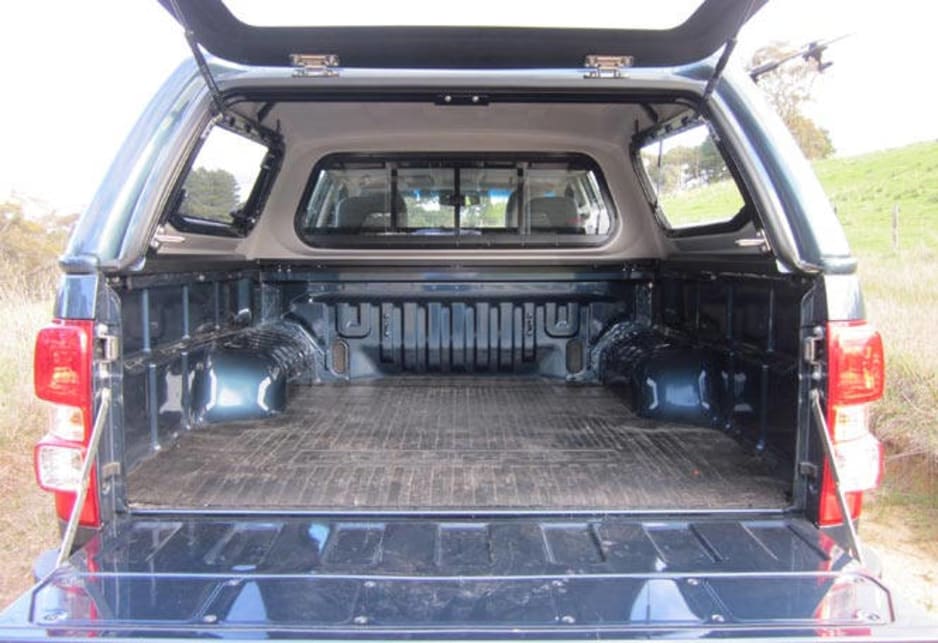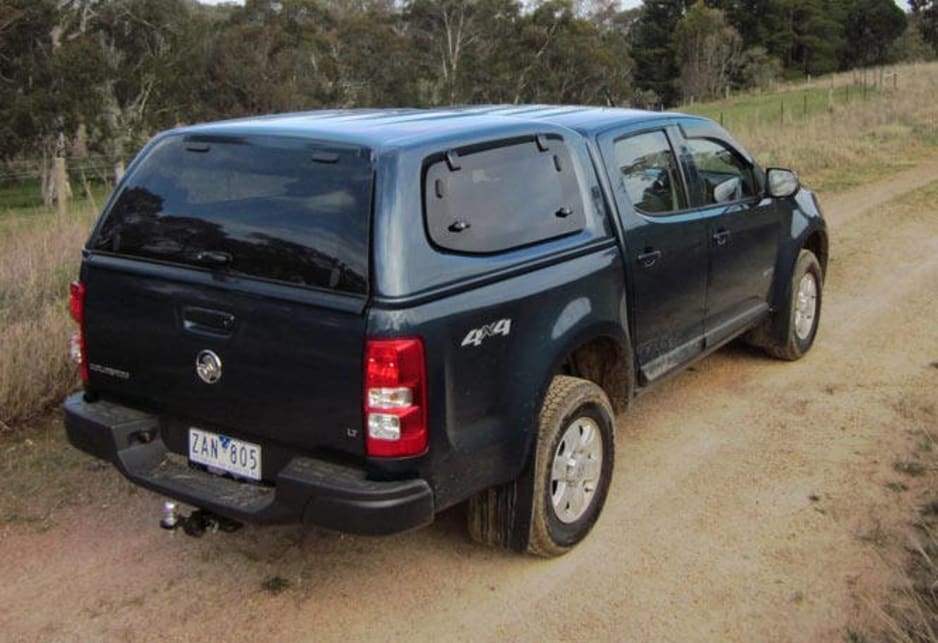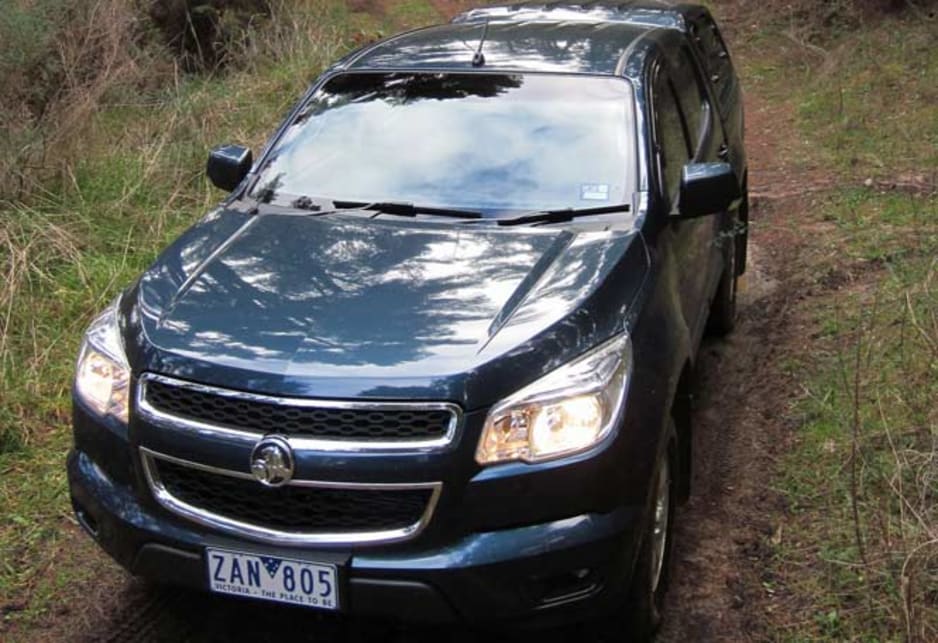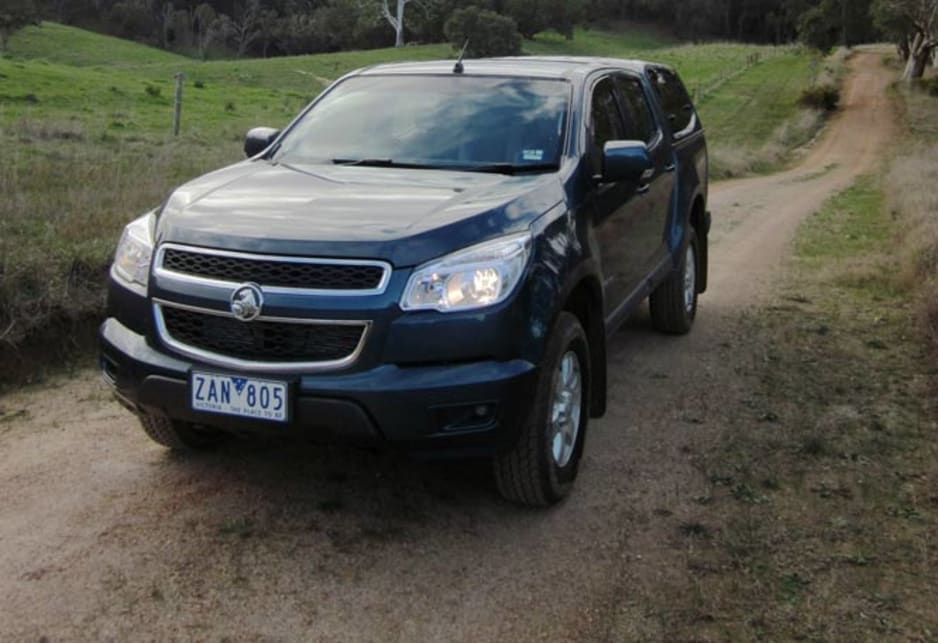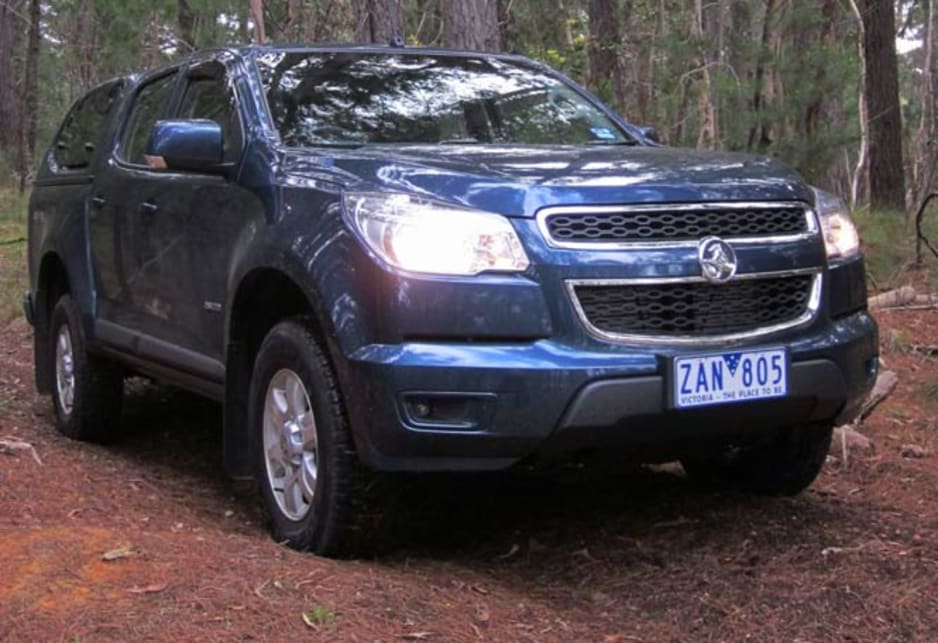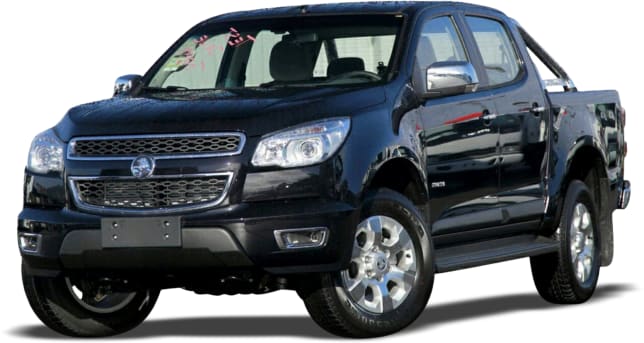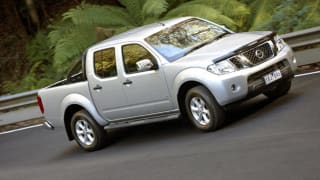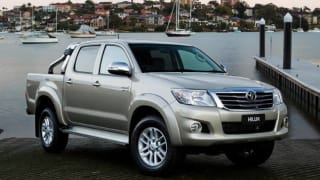The dual-cab ute segment is going gangbusters and Holden has been itching to get a new model into the segment.
The Colorado - a global truck developed by GM Brazil at a cost of US$2-billion - is sourced from the company's Thai plant and comes to market with a sharp price tag and upgraded grunt.
The first stint in the new model is behind the wheel of the LT dual-cab automatic, with some Holden accessories on board as well.
Value
Explore the 2012 Holden Colorado range
The LT is priced from $45,490 and that's well and truly in the ballpark when stacking it up against the opposition, most of which also comes from Thailand. The standard fare is a five-speed manual transmission but the optional six-speed auto adds $2000.
The features list includes air conditioning, power windows, Bluetooth phone link, two 12v outlets, cruise control, a leather-wrapped steering wheel with audio, phone and cruise controls, power mirrors, 16in alloy wheels and cloth trim.
Sadly, there's only tilt adjustment for the steering wheel, no rear air vents and while the cover says there's a USB input point within the dash, what's beneath it is not even close. The test car had a few options - among them $3510 worth of Genuine Holden Canopy, which has a rear light for the tray but no demisting capability.
Technology
The Colorado up-spec models are powered by one of the GM global powerplants - a 2.8-litre double-overhead cam four-cylinder turbodiesel, which won't be mistaken for a petrol engine.
Holden says it (when teamed with the optional six-speed auto) deliver 132kW and 470Nm - 10 per cent more power and 40 per cent more torque than the superseded 120kW/333Nm three-litre turbodiesel. The new model's iron-block alloy-head engine has common-rail direct-injection feeding the four-cylinder turbodiesel, which uses a variable-geometry turbocharger and a balance shaft for greater smoothness.
The intake side of the equation uses an electronic throttle valve and there's also a cooled exhaust gas recirculation system to reduce exhaust emissions. The new model is a little heavier than the old one, which might explain the slight increase in fuel use - up from 9 to 9.1l/100km despite extra gears in the auto, which puts it on par with the heavier Ranger.
Design
GM has gone the bull-nose route taken by Ford with the Ranger, but once passed the nose it's a fairly straightforward dual-cab ute. The tray on the test car was covered by a Holden accessory canopy that has fold-up windows on the sides and at the rear, as well as a sliding "pass-through" window butted up against a solid rear window for the cabin.
Holden says the sliding front window was a deliberate design for the canopy to allow access to clean the rear window of the cabin, but I'm not sure - a drop-down or flip-up system (like the side windows, but folding inwards) might have made more sense.
There's some useful touches to the interior storage, with two gloveboxes ahead of the front passenger and a half-decent centre console, while the rear seat gets a 12v outlet but no rear vents - something that is not as common industry-wide as it should be.
Safety
It's one of the key selling points in the segment now some companies are demanding ANCAP five-star ratings and Holden has it with this new LCV, a two-star jump from the old car. The active safety features list includes stability and traction control, anti-lock brakes (albeit with rear drums) with electronic brakeforce distribution and hydraulic brake assist, as well as the ability to run in 4WD if the going gets truly treacherous.
Inside the cabin there's dual front airbags (but no front-side airbags) and full length curtain airbags, but the Holden has three childseat top-tether anchor points behind the back seat, which are easy to utilise - some of its opposition have the fixture points difficult-to-reach places and make it hard work for the ute to double as weekend family transport.
Driving
The big Holden ute has presence a-plenty on approach, like the Ranger you're not going to miss it on the road. The cabin is comfortable enough in terms of seating but the driver gets only tilt steering and manual seat height adjustment, making an ideal driving position not easy to achieve; cold morning starts were further delayed by the glacial pace of the windscreen demister.
First impressions underway reflect the specs - the engine is noisier and, despite claiming the similar outputs to the Ford Ranger, feels more lethargic. The Colorado drivetrain feels underdone compared to the Ranger/BT-50 powerplant, something that can also be said for the chassis.
Ride quality is reasonably good in the Colorado but at the expense of turning and body control - the Ranger in particular manages this compromise with more dexterity. The steering ratio makes for busy arms for quick changes of direction and don't expect the wheel to offer much in the way of information regardless of surface.
It feels more at home on the dirt, chugging over most terrain with little fuss, or you can leave it in two-wheel drive and turn the electronics off - the low-end torque becomes a little more apparent and the arms get busy on the wheel again. On the open road the Colorado lopes along at a good rate, with the engine's torque giving it good cruising range - the fuel use at the end of our stint was just over 10 litres per 100km.
The 3.5-tonne braked towing capacity will get it plenty of attention but that alone won't be enough to get it to the top of the LCV heap. For US$2 billion and 2.5 million kilometres of development, it should be better than it is.
